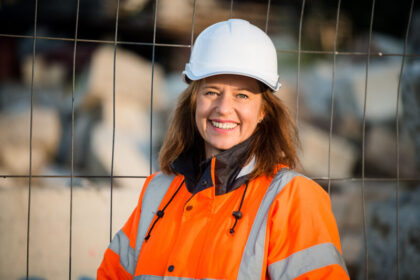Across most states in Australia, new legislation has focused increasingly on psychosocial safety, requiring organisations to evaluate and manage hazards and risks. In the past, organisations have often approached this element of safety reactively after an injury or incident has occurred. This tick-and-flick mentality may have included rolling out yoga and free snacks in the office, with the onus being on the individual to just be more resilient or simply manage their wellbeing better.
But this is no longer enough. The legislation states that organisations and leaders have a greater responsibility to provide a safe and healthy place in which to work. Psychosocial safety has always been part of the definition of safety, along with the physical elements, but it’s only now that we must make a purposeful and continued effort to address it.
In a recent interview, Positive Safety Specialist, Dr Vanessa Thiele, spoke with Professor Paula Brough, Director of Griffith University’s Centre for Work, Organisation and Wellbeing, and Tony Morris, Partner at Ashurst Risk Advisory, about the implementation of psychosocial safety regulations in organisations, as well as challenges and opportunities that companies they’ve worked with have faced.
Read on to learn how to cultivate a psychologically safe workplace, with fascinating insights from leaders in organisational psychology and law.
What are some of the more serious hazards you’re seeing coming up for organisations?
Tony: In my experience, it differs from organisation to organisation. Whilst the 14 psychosocial hazards that Safe Work Australia outlines are the same, it shows up differently once you’re talking to a client in their environment and their workplace.
When I reflect on who we’ve been working with, we’ve mainly been conducting risk assessments. The most challenging areas or hazards here have been the design and management of work, for instance, job demands, low job control, and role clarity.
Another really challenging area is organisational change. Another one that comes to mind for me – and I was talking to a very senior member of a government organisation – is traumatic events and material. There are a lot of jobs that require the reading or seeing of very traumatic incidents and events.
And finally, I’m finding clients sometimes struggle with conflict or poor workplace relationships or interactions. And I’m sure Paula’s got a lot to say about that one.
Paula: Yeah, absolutely. Even though this legislation is new, a lot of work has been happening over the last 50 years, looking at the mental health of workers in the workplace and trying to improve those factors. With occupational stress, for example, the literature and the evidence around occupational stress have a long history.
I feel the notion that employers suddenly have become immediately responsible is not quite right. There’s always been a responsibility, but it’s been more of an ethical, moral responsibility. Now, having the legal responsibility has boosted that cause.
Responsible employers have been looking at reducing their costs related to mental health illnesses, from whatever cause, for a long time – and reducing their insurance premium costs as well.
We’ve had many organisations come to us over the past 20-25 years to resolve broad occupational stress and mental health issues at work, many of which were definitely related to conflict among employees or with supervisors. Bad leadership practices, for example, are among the leading causes of workplace mental health injuries.
Is enacting the Code’s requirements a responsibility of HR, safety reps, or the legal team?
Tony: Officers must demonstrate due diligence to ensure that the person who conducts a business or undertaking complies with their obligations. So, for me, it goes straight to the board. It goes to the senior executives – those who make decisions that concern how systems are resourced, implemented, maintained, and monitored.
I think also, this has largely been an HR issue and always been seen to be that. That can no longer be the case. HR needs to work with Safety. Safety needs to work with HR. I think that’s challenging because it’s new and it’s different.
HR is viewed as being reactive, doing what they need to do following an incident, which they do very well, while Safety is viewed as being proactive – planning before an incident occurs. What controls are you going to put in place to minimise that risk? That’s what it’s about.
Safety is everyone’s responsibility. You hear that a lot. But everyone needs to know what their responsibility within their organisation is to ensure that the controls that have been agreed to and consulted on are in fact implemented. And I think a lot of organisations are struggling with that.
Paula: The legislation clearly puts psychosocial risks under the safety banner. And I think that’s a good thing; that’s advantageous. That helps to reduce the stigma associated with employees claiming and discussing that they have those risks, because that’s been the biggest issue about reporting. Bullying and harassment are such awful things to go through. Often the reporting process that many organisations use has really added to the stress of those events.
The goal is take away the stigma, trying to recognise that psychosocial safety is a safety issue. Previously, you’d look at a worksite and say, “Do I feel physically safe here? Am I working under a load?” Now, as well as all those normal physical safety aspects you’d view before you started work at a site, you just need to add an extra one on: “Do I feel psychologically safe?” And if not, there’s then a very clear mechanism for how to report that. That helps reduce the stigma and we really hope it’ll help improve the mental health of all workers.
Could you paint a picture for us around what ‘good’ looks like and what the best of the best are doing in this space?
Tony: I can safely say this: in my opinion, working across multiple industries, all of them have room for continual improvement. I don’t think anyone’s doing it perfectly. And I don’t think any of them would put their hand up and say, “We’re so good at this.” I’d even comment that the safety regulators are still designing and developing and improving how they’re going to police it.
So, what have they done though, those good organisations and clients and leaders? They’ve conducted really good, detailed risk assessments. And they’ve done them in workshops. What they’ve done is consulted and communicated well. They’ve got the leadership commitment.
They also understand that this is a change management process that requires improved controls to be consulted and then implemented, and then measured and monitored. What they’re doing is planning to put aside time costs and resources to make the change.
What remains, though, from what I’ve seen, is that they need to implement the change management program. And they need to report upon those higher risk controls and whether they’re effective or not.
Because, again, just because they’ve come up with a control mechanism or further controls, doesn’t mean they’re going to be totally effective. So, come back and review that. But I don’t think anyone’s got it perfect yet. I don’t think anyone would say they have.
From your research, how important is good leadership? What does it look like in terms of psychosocial risk management?
Paula: We’ve done quite a bit of work for several years showing hard evidence linking leadership styles – the good leadership styles – with wellbeing and performance and mental health of a team. Whether it’s leadership right at the top, or whether it’s your direct line supervisor, the leadership style of the person you report to has a very clear direct impact on your performance, on your team’s performance, and on the team’s wellbeing. Which means fewer sick days, less turnover of staff, more commitment, high performance – all the things you want.
We’ve been doing work with some very tricky industries to say, “You may think you do this,” and some of them quite blatantly, don’t do that. They haven’t got time to look after the soft side or the ‘touchy-feely’ side of their team. But we can show that if you do, the consequences will be better for everybody, and it will also cost your organisation a lot less in mental health claims. And now, of course, it’s required as part of compliance reports and things.
We’ve done a lot of work in that area, and with quite a bit of success. But really, it’s several levels. The exec level must set the culture. It must set the tone of the culture and has to show quite clearly that psychosocial safety and having a very positive culture works. It’s something they must advocate for very clearly, very directly, and it does trickle down. Right down to the immediate supervisors.
We have got many case studies where the opposite happens, where you have the exec level full of bullies, and there is just bad leadership practice. It’s astonishing, when you get into how bad they can be. But then we talk about why do they persist? Why are they still there? Why do these bad leaders get moved around from department to department, and have this trail of destruction behind them? And there’s all sorts of reasons for that. That’s a whole different conversation.
So yes, in answer to your question, it’s hugely important. It sets the scene, and there is a direct link between good leadership styles and the wellbeing of your workforce. It’s something that a responsible, moral and ethical organisation should be promoting.
Leadership is a key, major resource. And everything from work/life balance, resources and support for that, to issues around stress and wellbeing, issues around sexism, ageism, and racism, everything is set by the leader at all levels. It’s a key resource, and it can’t be overestimated, how important leadership is.
Where do you see the future of health and safety, particularly in relation to psychosocial risks? How do you see that evolving?
Tony: Look, I call psychosocial risk the new frontier of work health and safety, so much so that it’s our strategic focus in work health and safety where I am. That is what the team and I are focused on growing and doing more for, because we can see this coming.
I actually heard one of our very senior legal partners say the other day, talking generally about clients in the UK, that – for many – this is a steam train coming towards these executives, and they don’t even know it yet.
I mean, if I think about it, we’ve got other risks that we work on with clients. And I know a lot of boards, a lot of execs, focus on cyber-attacks, data governance, privacy, and ESG matters. They’re hot topics, right? And there’s a lot of time and investment and money spent on that.
But this is going to grow. I think we’ll see the safety regulators prosecuting more in court for alleged offences. I think we’re going to see convictions. With convictions will come judges’ commentary on their expectations, and many of those organisations that might be slow to react will have to hurry up and catch up to those that are acting now.
We’ve mentioned it before, but this is no longer an HR issue, it’s a safety issue. You need to be proactive, you need to plan for it – it’s the future.
What do you see as the benefits of having an opportunity mindset about these changes? What have you seen from some of the people you’ve worked with?
Paula: More and more, culture underlies everything. Everything to do with mental health in the workplace really does come back to culture. And in fact, my work has moved from having purely an occupational stress lens through to culture leadership, because it does have an impact.
We’re seeing more and more organisations taking this opportunity to say, “Okay, what are we trying to achieve here, in terms of promoting a decent workplace?” That’s the key, really. A decent workplace for our staff.
Having a good positive, moral, ethical, transparent culture, which is supportive of staff at all levels is key. It’s key for everything. You will then attract more workers. You will then retain more workers. You will then address issues around motivation and workplace learning, and reduce your absenteeism costs, reduce your mental health claims costs. Hopefully reduce your compliance and your risks of criminal charges costs.
We’ve been doing quite a bit of work looking at what an ethical leader is and what an ethical workplace culture is. And it’s just about being supportive and transparent. That’s something we’ve been trying to promote for a long time: having a supportive culture. And being there to assist your workers to grow and perform, not thinking that you’re the boss and “Everything I say goes.” Culture is the key.



